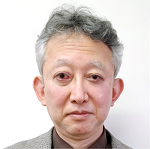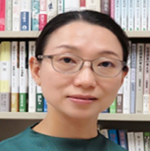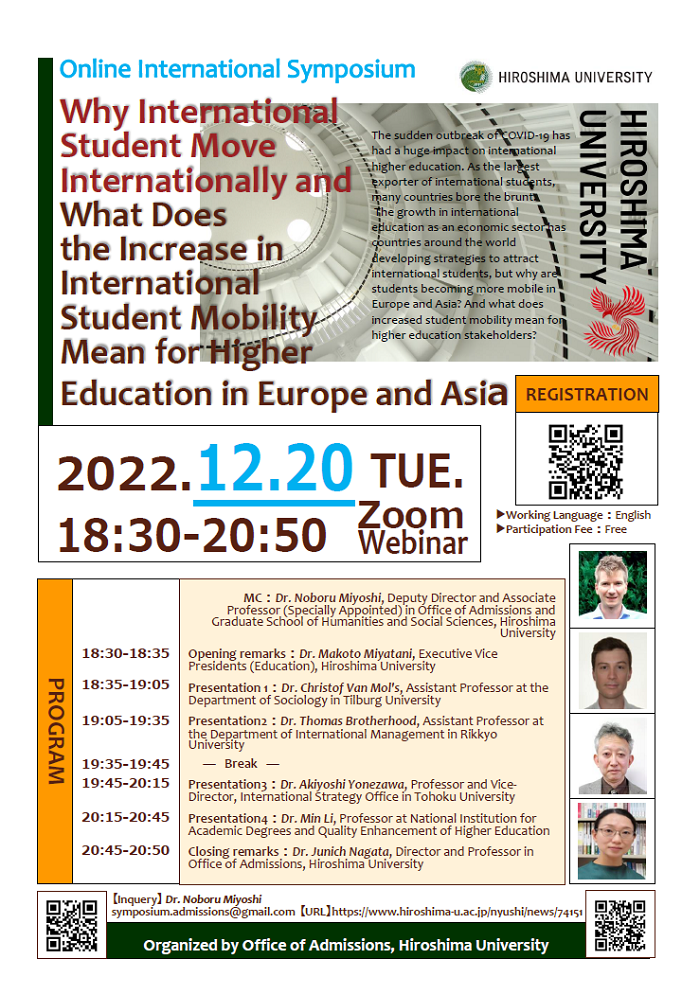Time and Date
18:30~20:50, 20th December 2022 (JST)
Registration
- Working Language: English
- Participation Fee: Free
- Registration
- https://forms.gle/gz9C1jLf6GLxbnpc6
- Please fill in English.
A) The registration is open until 12:00, December 16th (JST).
B) We will inform you of the participation URL by the day before. Please contact us at the following address by noon, December 19th (JST) if you do not receive the email.
symposium.admissions@gmail.com
Aim of the Symposium
The sudden outbreak of COVID-19 has had a huge impact on international higher education. As the largest exporter of international students, many countries bore the brunt. Facing the uncertainty of health and overseas study policy brought by the pandemic, international students are all waiting and considering whether to abandon or change their study abroad plans. The growth in international education as an economic sector has countries around the world developing strategies to attract international students, but why are students becoming more mobile in Europe and Asia? And what does increased student mobility mean for higher education stakeholders?
With the process of globalization, the term internationalization is increasingly used to discuss the international dimension of higher education. According to Knight (2012a), the internationalization of higher education include two pillars: "at home" and "cross-border". Cross-border education refers to the cross border flow of people, projects, providers, policies, knowledge, ideas, projects, and services, including face to-face and virtual flows. Among different forms of internationalization, international student mobility has received the greatest attention and has become a priority area (Knight, 2012a).
Scholars from various countries have conducted a lot of research on the concept, structure, motivation, and value of international student mobility. Regarding the concept, the scope defined by academic organizations or scholars has expanded with the diversification of international student mobility. A broad definition in a Higher Education Funding Council for England (HEFCE) report of 2004 is that International Student Mobility is “any form of international mobility which takes place within a student’s program of study in higher education” (King, et al., 2004, p. 11). Knight (2012b) classified the forms of international student mobility into the following six categories: (a) a complete degree program in a foreign country, (b) short-term study abroad experience as part of a degree program in a domestic institution, (c) two or more cross-border cooperation degree programs between institutions or providers, (d) research and field trips, (e) internships and practical experience, (f) study tours, seminars. With the development of society and technology, new virtual forms of international student mobility have emerged. Wells (2014) expanded the conceptual scope of international student mobility. He proposed that international student mobility can be virtual (computer mediated, remote) or physical (also called spatial or geographic); it can be introverted (to enter a country) or outgoing (to leave a country). At present, virtual mobility is becoming more and more common in cross border learning. Therefore, international student mobility discussed in this symposium also includes virtual mobility.
In terms of structure, the scale and direction of international student mobility are the focus of scholars and governments. In the past ten years, the number of international students has grown rapidly. There are currently more than 5 million international students worldwide, an increase of 67% compared to a decade ago (Ma & Chen, 2018). International organizations such as the United Nations Educational, Scientific and Cultural Organization (UNESCO), the Organization for Economic Cooperation and Development (OECD), and educational groups with international influence such as the Institute of International Education (IIE) and the National Association of Foreign Student Affairs (NAFSA), have played an important role in the statistics of international student mobility.Ma and Chen (2018) analyzed the relevant data and reports of international organizations and found that the number of international students continued to grow, but the number of students in destination countries was uneven, showing a trend toward high-end academic qualifications and sought-after STEM fields. In terms of spatial distribution, international students are unevenly distributed among different countries according to the level of education and population size. Nicolescu and Galalae (2013) conducted statistics on the main exporting/receiving countries of international students from 1968 to 2006, finding that European and United States were the most popular study destinations, and China, India, and South Korea were the most active providers of international students.
At present, although European and American countries are still the preferred destinations for studying abroad, Asian countries such as Japan and China are emerging as host countries for international students. In particular, more and more Asian students are turning their study destinations to Asian universities (Pfaff-Czarnecka, 2020).
Regarding the motivation of international student mobility, scholars often use theoretical frameworks to support their analysis, including push-pull theory, human capital theory, cultural capital theory, international migration theory, etc. The push-pull theory advocates that the motivation of international students is combined with the "push" factors from the home country and the "pull" factors from the destination country. The human capital theory advocates that the international mobility of students is a typical human capital investment of individual students by the national government or individual families (Crossman & Clark, 2010). On this basis of Bourdieu’s theory of cultural capital, Waters (2007) proposed that the pursuit of high-quality overseas higher education is to protect the advantages of the class and promote the reproduction of family cultural capital. International migration theory advocates that international student mobility is a special phenomenon of international migration (Bai et al., 2018). Wolf, Freedman, and Soldo (1997) proposed that international migration is a collective decision and strategy aimed at ensuring the economic survival and development of family units. Therefore, social units (such as families) influence the formation of international student mobility and migration decisions.
International students represent a valuable asset to universities in the form of increased revenue and more diversity, but recruiting these students is not enough. University need to ensure that their international recruits will succeed and graduate. Globally-oriented higher education must include strategies that prepare and support international students. Pathway and preparatory programs are well established in many English-speaking countries, but the global shift towards international education has more countries adopting the practice in order to give overseas students more opportunities. Preparatory programs can help to align international students’ skills and knowledge with local requirements, so that they have the tools to succeed in their chosen program. Likewise, language instruction and resources are also an important resource for colleges and institutions hoping to attract more international students.
Similarly, it is important for internationally-minded universities to reassess curricula and teaching methods. Universities that want to recruit more international students should make sure that course offerings appeal to a global student market and that students can earn transferable or internationally recognized credentials. It can also be beneficial to look at instruction and assessment strategies. While it is reasonable to expect students to adapt to local standards, it can still be helpful to understand and anticipate the challenges posed by independent study, group projects, academic integrity requirements, or examination structures.
Program
MC: Dr. Noboru Miyoshi,Deputy Director and Associate Professor (Specially Appointed)
in Office of Admissions and Graduate School of Humanities and Social Sciences,
Hiroshima University
| 18:30ー18:35 | Opening remarks | Dr. Makoto Miyatani, Executive Vice Presidents (Education) , Hiroshima University |
| 18:35ー19:05 | Presentation 1 |
Social selectivity in study abroad decisions across Europe and the impact of increasing student mobility on the Netherlands |
| 19:05ー19:35 | Presentation 2 | Why do international students move internationally?: Agency as a catalyst for international study Dr. Thomas Brotherhood, Assistant Professor at the Department of International Management in Rikkyo University |
| 19:35-19:45 | -Break- | |
| 19:45-20:15 | Presentation 3 |
Constructing a Shared Learning Space:Value of Mobility and Digital Connection at Undergraduate Education |
| 20:15-20:45 | Presentation 4 |
Who and why did they choose China as a higher education study-abroad destination? |
| 21:15ー21:20 | Closing remarks | Dr. Junich Nagata, Director and Professor in Office of Admissions, Hiroshima University |
Details of Speakers

- Dr. Christof Van Mol's
Dr. Christof van Mol is Assistant Professor at the Department of Sociology, Tilburg University, the Netherlands and leads the ENIS-network (European Network on International Student Mobility), which brings together scholars and practitioners working on international student mobility. He extensively published on different aspects of international student mobility in leading journals in different disciplines, such as Geoforum, Higher Education, the Journal of Ethnic and Migration Studies, the Journal of Studies in International Education, Population, Space and Place and Studies in Higher Education. His work received several academic awards, including the 2016 Best Book Prize in Sociology of Migration of the International Sociological Association, the 2020 ASHE CIHE Award for Significant Research on International Higher Education, and the 2021 SIG International Students Best Article Award of the Comparative and International Education Society

- Dr. Akiyoshi Yonezawa
Dr. Akiyoshi Yonezawa is Professor and Vice-Director of International Strategy Office, and a Special Advisor for the President, at Tohoku University, Japan. With a background in sociology, he mainly conducts research on comparative higher education policy –especially focusing on world-class universities, internationalization, and public-private relationships in higher education. He established his expertise in higher education policy and management though working experience at Nagoya University, OECD, Hiroshima University, and the University of Tokyo. He is a board member at Japan Association for Higher Education Research, at Japan Comparative Education Society, and Japan Society for Educational Sociology. In addition, he is a national delegation of the Group of National Experts on Higher Education for OECD. He is also actively contributing international research publication, e.g., as an editorial advisory board member of Higher Education and International Higher Education. He is a member of the editorial board of Higher Education Quarterly and a member of the Higher Education Editorial Advisory Board.
Major edited publications: Yonezawa, A. Kitamura, Y., Yamamoto, B. and Tokunaga, T. (Eds.) (2018). Japanese Education in a Global Age: Sociological Reflections and Future Directions. Springer.
Jung, J., Horta, H., Yonezawa, A. (Eds.). (2017). Researching Higher Education in Asia. Dordrecht: Springer.

- Dr. Min Li
Dr. Min Li is Professor,at Research Department, National Instituition for Academic Degrees and Quality Enhancement of Higher Education. She gets Ph.D. Ochanomizu University, Tokyo, Japan. She is researching Internationalization of higher education (Student Mobility,International Faculty), Labour market for graduate students, Comparative and international education, Graduate education and Life-long education in japan and China. She was awarded The 5th Japan Society of Educational Sociology Incentive Award (Book Division), September 2013 and Japan Economic Research Council 50th Anniversary Essay Competition First Prize (General Section), February 2012.
Organized by Office of Admissions
Inquiry
Noboru Miyoshi, Ph.D (Education)
Deputy Director, Associate Professor (Specially Appointed)
Office of Admissions, Hiroshima University
E-Mail: symposium.admissions<AT>gmail.com
※Please change <AT> to a single-byte at sign and send.


 Home
Home






